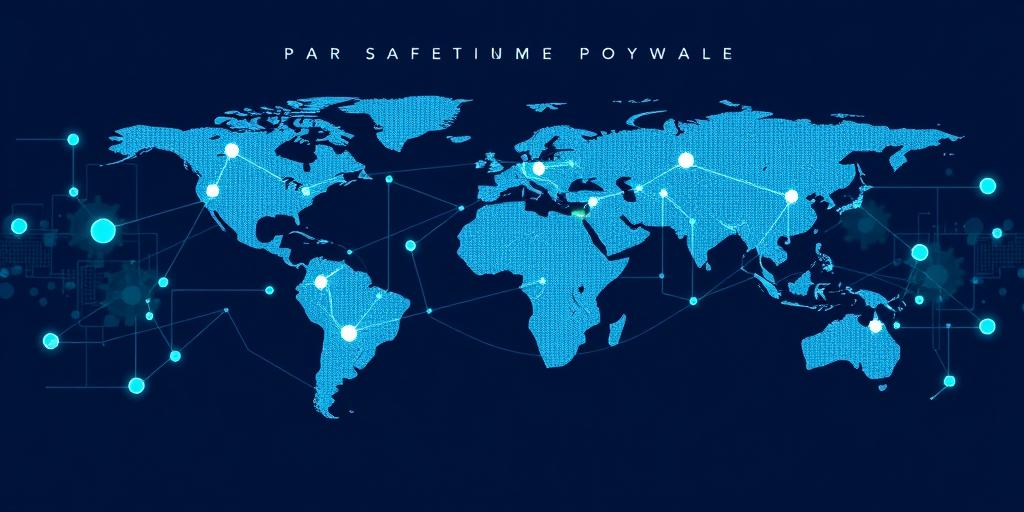Global Pandemic Preparedness: Are We Ready for the Next One (2025)?
The COVID-19 pandemic exposed critical vulnerabilities in global pandemic preparedness. Healthcare systems were overwhelmed, supply chains collapsed, and economies faltered. As we approach 2025, it’s crucial to assess our readiness for future pandemics. This post examines key areas of preparedness and identifies gaps that need addressing.
Key Areas of Pandemic Preparedness
- Surveillance and Early Warning Systems: Robust surveillance systems are essential for detecting outbreaks early. This includes monitoring human, animal, and environmental health data to identify potential threats before they escalate into full-blown pandemics.
- Healthcare Capacity and Infrastructure: Adequate healthcare capacity is vital for managing a surge in patients during a pandemic. This includes sufficient hospital beds, ventilators, personal protective equipment (PPE), and trained healthcare personnel.
- Vaccine and Therapeutics Development: Rapid development and distribution of vaccines and therapeutics are crucial for controlling a pandemic. This requires investments in research and development, manufacturing capacity, and regulatory frameworks that facilitate rapid approval and deployment.
- Supply Chain Resilience: Resilient supply chains are necessary to ensure the availability of essential goods and services during a pandemic. This includes diversifying sourcing, building stockpiles of critical supplies, and strengthening logistics and distribution networks.
- Public Health Communication and Education: Effective public health communication is essential for promoting adherence to preventive measures, such as vaccination, mask-wearing, and social distancing. This requires clear, consistent messaging, targeted communication strategies, and community engagement.
- International Collaboration and Coordination: Global cooperation is critical for pandemic preparedness and response. This includes sharing information, coordinating research efforts, and providing assistance to countries in need.
Gaps in Pandemic Preparedness
Despite progress in recent years, significant gaps remain in global pandemic preparedness:
- Inadequate Funding: Many countries lack sufficient funding for pandemic preparedness activities, including surveillance, research, and healthcare capacity building.
- Weak Surveillance Systems: Surveillance systems in many parts of the world are inadequate, making it difficult to detect outbreaks early.
- Limited Healthcare Capacity: Healthcare capacity is limited in many countries, particularly in low- and middle-income countries, which could be quickly overwhelmed by a pandemic.
- Unequal Access to Vaccines and Therapeutics: Access to vaccines and therapeutics is often unequal, with high-income countries securing the majority of available supplies.
- Lack of Public Trust: Public trust in government and healthcare institutions has eroded in some countries, making it more difficult to implement effective public health measures.
Recommendations for Improving Pandemic Preparedness
To address these gaps and improve global pandemic preparedness, the following actions are recommended:
- Increase Funding: Governments and international organizations should increase funding for pandemic preparedness activities.
- Strengthen Surveillance Systems: Countries should invest in strengthening their surveillance systems, including expanding laboratory capacity and improving data collection and analysis.
- Expand Healthcare Capacity: Countries should expand their healthcare capacity, including increasing the number of hospital beds, ventilators, and trained healthcare personnel.
- Ensure Equitable Access to Vaccines and Therapeutics: Governments and manufacturers should work together to ensure equitable access to vaccines and therapeutics.
- Build Public Trust: Governments and healthcare institutions should work to build public trust through transparent communication and community engagement.
Conclusion
The COVID-19 pandemic served as a stark reminder of the devastating impact that pandemics can have on our societies and economies. As we approach 2025, it’s imperative that we learn from our experiences and take the necessary steps to strengthen our pandemic preparedness. By addressing the gaps identified in this post and implementing the recommendations outlined above, we can better protect ourselves from future pandemics and build a healthier, more resilient world.
